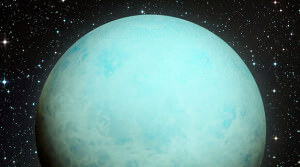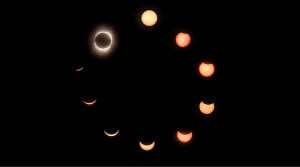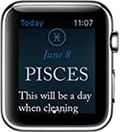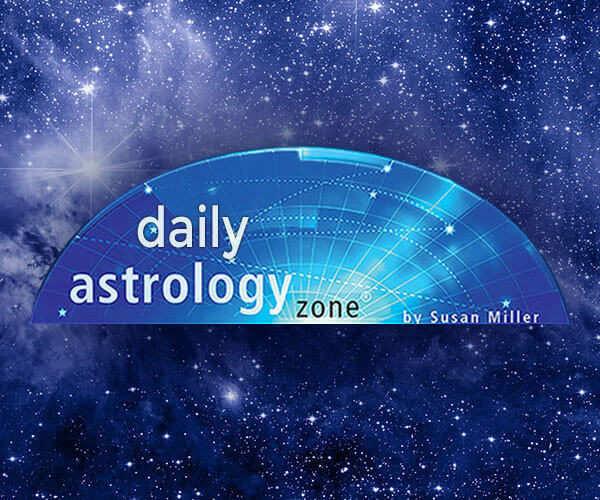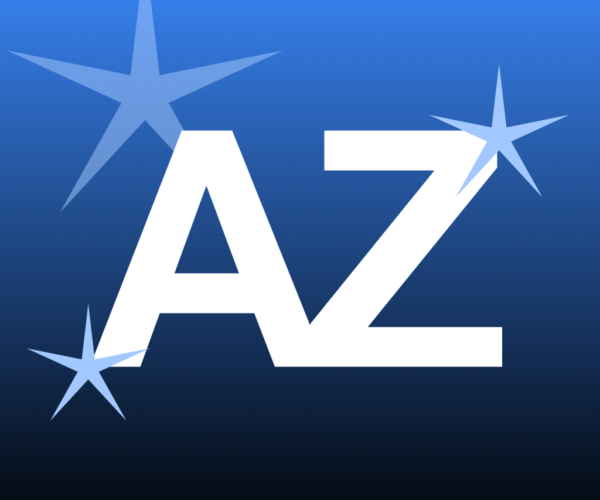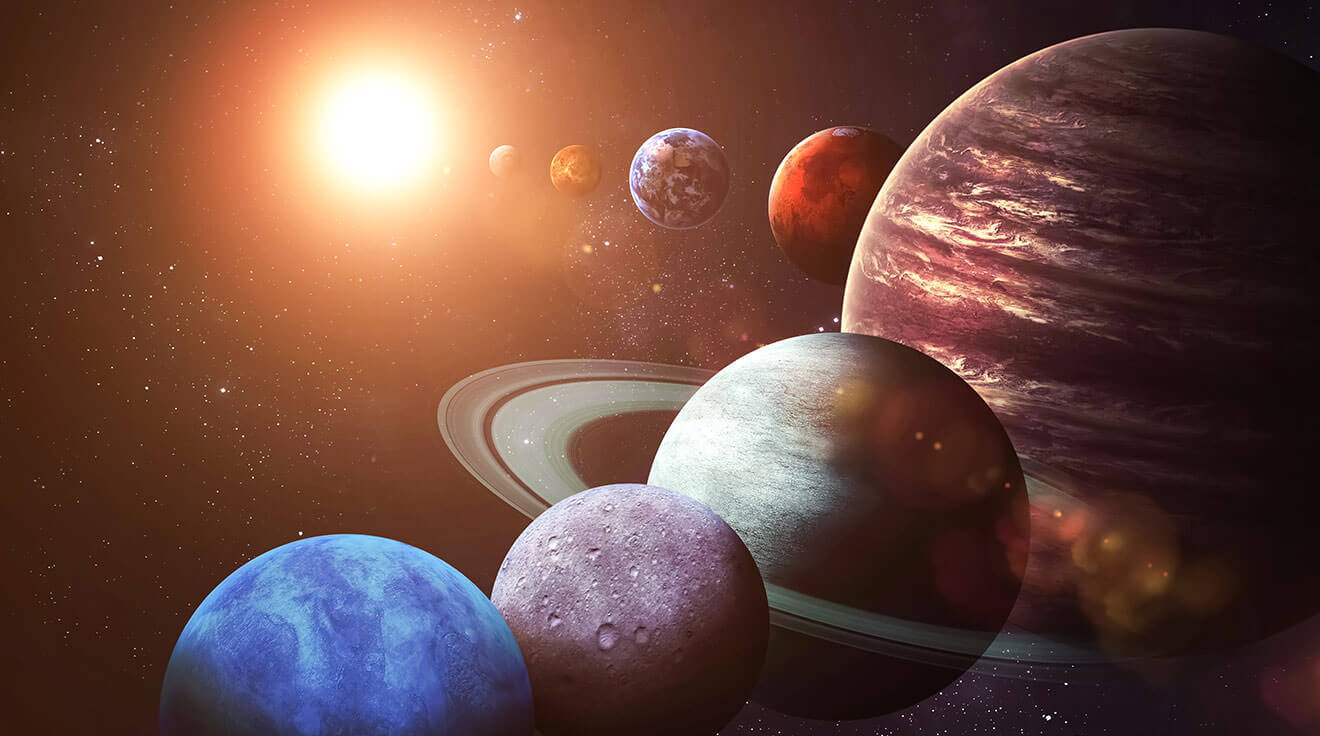
By Susan Miller
Why no changes are coming to the zodiac, why there is no 13th sign, and why you should continue to read the sign you always read.
Every so often, NASA or a member of the scientific community makes a statement about astrology that gets everyone in a tizzy. The scientists,who do not know astrology, came out recently with a statement saying that you are reading the wrong sign. You are NOT reading the wrong sign. The signs have not changed, and to prove this to you, I have written a thorough report to you in conversational style so that you will understand why you should keep reading the sign you were born into and help you instruct others on the subject as well.
The scientists are talking about the fact that constellations have moved since astrology was first put into practice by the Babylonians, who lived in Mesopotamia from approximately 2000 BC through about 700 BC. The Babylonians are considered the world’s first great astronomers.
It is true that the constellations are shifting approximately 1 degree every 72 years, and it is called the Precession of the Equinoxes, a subject you may have studied in high school science class. However, astrologers say that you don’t glean your personality from the constellations – you get your qualities from the planets. In my report I show you why there cannot be a 13th sign, why the precession of the equinoxes are not material to your sign, and that no one discovered a new constellation. As a point of information, today the International Astronomical Union (IAU) is the sole authority for assigning designations and names to celestial bodies, and they have divided the sky into 88 sections or “constellations.” There was no new constellation discovered that changes your sign.
Scientists freely admit they have never studied astrology nor understand our algorithms of how we calculate a chart. After you read my report, you will understand how astrologers do our work.
To settle this debate, I prepared a report for you back in 2011, but now that it has become a hot topic again, I am posting it on my website now as a headline story.
I feel reading my paper all the way to the end will be very illuminating, and will show you precisely why you need to read for the sign you have always read. You know I am thorough – here it is!
The Precession of the Equinoxes: What Sign Am I Now?
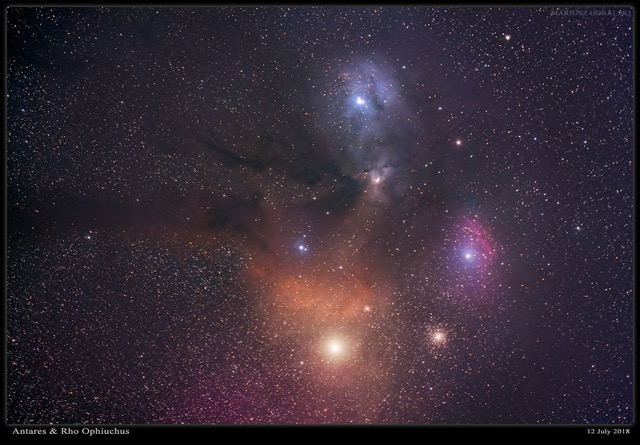
It started as any other January morning. It was January 14, 2011, and I was excited because I had my special annual talk in New York coming up the next day, where I discuss the year ahead. The event was entirely sold out, so there was plenty to do – updates to ticket sales, flowers to be delivered, guest lists to double-check, discussions with the Club chef, and name tags to print. I had a team working on things with me, and we were all operating at top speed. Things were under control. I had booked a very early hairdresser appointment before 9:00 a.m. because I felt it was best to get that done first. My event was to be the morning of the following day, a Saturday. As I walked in, I gave a kiss to my hairdresser on both cheeks and proceeded toward my chair carrying my paper bag of coffee, breakfast muffin, and The New York Times, along with my laptop and cell phone. I was set and planned to handle some last minute details from there.
Sitting in my hairdresser’s chair, after he had completed my trim, as the sound of the blow dryer began to buzz around my ears, my cell phone started to make strange popping sounds – like popcorn popping incredibly fast. Text messages were suddenly coming in furiously, faster than I had ever seen any come in before. At first I thought the sound of the hair dryer was making me hear things that really weren’t there. I looked at my cell phone’s screen, and the texts were exploding from the press. There were 23 texts and 10 phone messages, and it wasn’t even 9:00 a.m. yet. My office was texting me, too – get back here!
What had happened? I worried that a terrible disaster had hit, but was relieved to hear it was not that, but something I never could have imagined or anticipated.
Five days earlier, on January 9, a lifestyle reporter named Bill Ward working for the Minneapolis Star Tribune had discovered a previous article dated October 23, 2007, and posted on LiveScience.com, which reported that the astrological signs used in newspapers were all wrong and that you are likely reading the wrong sign. The story went on to explain that this was due to a gradual westward shift of the constellations over thousands of years, called the precession of the equinoxes. The reporter assumed the astrological community as well as the general public knew nothing of this, and in addition, there were “new discoveries,” so he decided to dust off this old story and present it as urgently as he would have announced the cure for a modern-day plague.
Ward called on Parke Kunkle, an astronomer who currently holds a seat on the board of the Minnesota Planetarium Society, to make a comment. Ward jumped on the opportunity to “teach” the astrological community a thing or two about science. Basic to all scientific study is proper research, but neither Mr. Ward nor Mr. Kunkle called a single astrologer before going to press.
Mr. Ward reported that Mr. Kunkle had “discovered” a 13th sign of the zodiac, Ophiuchus, that was found near the celestial equator at the end of Scorpio and beginning of Sagittarius that is typically depicted as a man wrangling a serpent. “Ophiuchus,” pronounced OFF-ee-YOU-Kus or alternatively, OFF-YOO-Kus, means “serpent-bearer” in Greek, and should be added immediately as a new zodiac sign. The story went on to say you were likely a member of the sign previous to yours, so if you thought you were a Virgo, you were probably a Leo.
The media exploded, and the topic began to trend all over the world. The reporter had presented not one, but two, very complex ideas to discuss, each somewhat unrelated to the other: 1) adding a new zodiac sign (never done on a whim), and 2) the whole concept of the precession of the equinoxes. The story was clearly made to discredit astrologers, and astronomer Kunkle freely admitted later he had assumed astrologers know nothing about the precession of the equinoxes – but we do.
I knew the Minneapolis Star Tribune story was wrong, but the situation was not an easy one to address because astrologers were now in the horrendous position of having to disagree publically with a scientist and a newspaper journalist to an already inflamed, now doubtful public. The concept required discussion and explanation but the 24/7 news cycle and social media favors rapid-fire sound bytes.
The headlines were all very much the same – no matter what sign you think you are, it has changed today, so start reading that other sign. Upon hearing this news, the public was understandably upset, for the article suggested that the astrologers, through their ignorance of astronomy, had duped them. News of this small story was quickly picked up by bloggers, on Twitter, and on Facebook. Suddenly the story went viral, trending in every country of the world, and my life was being turned upside down.
By January 14, five days after the story appeared January 9 (and I had seen some casual buzz about it from the Twitterati, a term I use to denote frequent, opinion leader posters on Twitter), every major news organization was calling any astrologer they could find for comment. By then, news of this tiny story in the lifestyle section of a Minneapolis newspaper had gone ’round the world and reached me early that morning in my hairdresser’s chair.
I was finding that when I did describe things correctly, the journalist or on-air host didn’t understand what I had to say and summed up things incorrectly. Or, I found that my words were edited in such a way that made my response patently wrong, much to my horror when I saw my interviews on air later. Many times the reporter, who seemed so warm and friendly on meeting, was really out to discredit astrology – and me – any way he could. Because I am trusting, I did not think to put on my armor. Not all journalists were like this, but many were, and it made for a tumultuous time. At CNN, things went so horribly wrong, I did something I swore never to do – I called the reporter afterward and asked that he redo the interview that had already aired. Much to CNN’s credit, they invited me back two days later to have a second interview with a different reporter, who this time got things right.
Hipparchus of Nicaea Discovered the Precession of Equinoxes in 134 BC
The fact is, the theory of the precession of the equinoxes was not started by the astronomers at the Minneapolis planetarium at all, but was developed in approximately in 134 BC by the Greek mathematician, geographer, astronomer, and astrologer, Hipparchus of Nicaea (190-120 BC).
It was obvious that if Hipparchus had developed the concept of the precession of the equinoxes in 134 BC, that meant modern-day astrologers have had 2,000 years to study it – and we did!
Hipparchus is credited with founding the precepts of trigonometry, so he was certainly a giant in his time, and of course, that was only one of his discoveries. Back in those years, Hipparchus noticed that the earth’s axis had changed directions and that the constellations were gradually moving in retrograde motion. How Hipparchus developed this correct discovery is interesting, so I will describe it here.
Hipparchus had been looking at a brand new star in the Scorpio constellation, and the appearance of that star gave him the idea of cataloguing all the stars he knew about – the list numbered over 1,000 stars. He also posted the position of each stars’ latitude and longitude. To this day, that list is considered to be remarkably accurate.
Next, Hipparchus looked up observations noted by other ancient astronomers who had recorded those same star positions 150 years before and noticed that those stars had shifted from the fixed points that they had occupied in their constellations. After he made those comparisons, he must have instantly known he was on to something. Those changes had to be a result of the movement of the axis of the earth in the direction of the apparent daily motion of the stars. This causes the equinoxes to fall ever so slightly earlier than they had the year before.
A Few Scientific Facts and Definitions of Terms
Before I go on, I need to define the term “equinox”: either of the two points on the celestial sphere at which the ecliptic intersects the celestial equator.
That definition probably doesn’t help you, so I will make it clearer. I need to show you how we fix the position of planets in astrology.
The planets in our solar system generally exist on the same plane and move along a circular belt that surrounds the center of the earth called the “ecliptic.” Think of this as a beautiful belt of twinkling stars, where all the constellations of the zodiac are found. In other words, those constellations are not found all over the sky, but in a very narrow band that circles the earth. The constellations are of different size and brightness, but in astrology, those things don’t matter. Some constellations overlap each other a bit, and again, that’s not relevant. All twelve signs of the zodiac are comprised of 30 degrees (30 x 12 = 360 degrees in a circle). Remarkably, this holds true in all astrologic theory, whether you subscribe to Western astrology or Vedic astrology, which is practiced in India.
There are two imaginary circles we can draw in our mind’s eye to help us pinpoint the positions of the planets. One is to draw the equator, the thin circle you draw around the center of earth, separating earth into Northern and Southern Hemispheres. When you extend this line into space, it is called the “celestial equator.” (This is good to know, as you may need it in the next section.) The celestial equator is important because it provides a standard of reference for positional measurements without the necessity of taking the varying distances of the planets and stars involved.
The ecliptic is defined as the path that the Sun will take, as it seems to travel around the earth. (This is an apparent motion, not a real one, because of course, the earth travels around the Sun, not the other way around. Thinking about this from our vantage point on earth is a legitimate way to help us fix the planets’ positions.) The ecliptic lies at an angle to the celestial equator, and where these two elliptical circles touch, twice, sets 1) the Vernal equinox, marking the start of Aries, and 2) the Autumnal equinox, marking the start of the sign of Libra.
Now we need a little bit more science, but this next section is easier to understand, and actually quite fun to think about. It involves the three ways the earth rotates – you may never have thought much about it.
The Three Ways the Earth Rotates, Plus a Wobble
One type of earth’s rotation is “diurnal motion” which, very simply, is the way the earth rotates to give us day and night. Every day we have a sunrise and sunset – that’s this rotation.
Another type is earth’s revolution, which is the fact that the earth takes a year to revolve around the Sun, giving us the four seasons. Lovely, yes? Sometimes we take all this for granted!
A third way the earth moves is a little more complicated so I will describe it this way. Imagine a gigantic dinner plate that holds the earth, its moon, and all the planets, all spinning together as a group, our solar system. You can see it as you remember you were taught in grade school or how you saw those planets aligned at the Planetarium. The earth and all the planets will keep spinning on this big (imaginary) white dinner plate through all twelve signs of the Zodiac, with the rotation speed of approximately 10 miles per second, in the Milky Way. It will take earth 2,000+ years to get through one sign, and approximately 26,000 years to complete a visit through all 12 signs of the zodiac. You have heard of the Age of Pisces and the Age of Aquarius – this is what they are talking about – the departure of the earth from its 2,000-year visit to Pisces and its recent (or impending) entrance into the sign of Aquarius.
There is some disagreement about whether we have entered into the Age of Aquarius yet or not – some astrologers say we are there, and others say it’s still 600 or more years away. (I say we arrived the minute Sputnik went up in the 1950s.) Each Age is over 2,000 years, so it’s hard to be specific about start and end dates. The Age of Pisces saw the birth of Christianity and the age of faith. The art reflected the emphasis of the times, and the beautiful cathedrals came out of the Age of Pisces. Astrologers look to the cultures of the age to help to pinpoint these Great Ages.
The earth, as it spins, creates a wobble like a fast spinning top. The term “precession of the equinoxes” refers to that motion or wobble. This means that certain fixed stars, such as Castor, which used to be in Gemini, is now in Cancer. In Western astrology we use a tropical (or fixed) zodiac, and refer to the area of the sky named after the constellations, rather than the constellations themselves. That is a vital concept, and you will see me mention it several times so that you don’t miss it.
Here is another way of understanding this concept of earth’s wobble. Imagine a round piece of fruit like an orange (earth) with a long metal rod pierced through the orange at an angle (signifying the North and South Poles). The earth’s North Pole, over the course of approximately 25,868 years, now points directly to the North Star, Polaris, but won’t do so forever. In some future date, thousands of years from now, it will point to another star altogether, such as Vega. This refers to one way the earth rotates, in a backward (or retrograde) motion, through all the zodiac signs, each called Great Years, each of which take a little over 2,000 years.
That will be important for you to know, for it relates to the Great Ages that we will talk about in regard to the Mayan Calendar in the next chapter. You may have heard that earth is moving out of the Age of Pisces, a period of over 2,000 years of faith and emphasis on religion, to the Age of Aquarius, an age of peace and brotherhood, and also likely to be a time of vast technological change.
The Great Ages – 2,000 Years Long – from Leo to Aquarius
The earliest of the Great Years known to us is the Leo Great Year (10,000 to 8000 BC). After that came the Age of Cancer (8000 to 6000 BC), Age of Gemini (6000 to 4000 BC), Age of Taurus (4000 to 2000 BC), Age of Aries (2000 to 1 BC), Age of Pisces (approximately 1 to 2000 AD), and the Age of Aquarius is due next, or, what I feel we are in now. While there were Great Ages prior to Leo, we measure those years by what can be seen as emphasized through culture. The Leo Great Year corresponds to the cave paintings of great beauty in Lascaux, France, some of the earliest artwork ever found, and typifies the creativity of Leo. The Age of Cancer showed the initiation of farming techniques and the start of structured housing, and speaks to the home-orientation of Cancer. Keep in mind that the earth is spinning in retrograde motion, so that we have the Age of Leo, followed by the Age of Cancer, and so forth, going backward.
To put astrology in context, astronomical observation began in Mesopotamia, where prominent constellations were recognized and named shortly after 3000 BC. Similarly, the astronomers/astrologers (practitioners back then did both) of Mesopotamia also identified the five wandering stars of Mercury, Mars, Venus, Jupiter, and Saturn, which, along with the Sun and moon, form the seven original planets. (The word “planets” is derived from the Greek word for “wanderers.”)
Babylonians, who lived in Mesopotamia from approximately 2000 BC through about 700 BC, are considered the world’s first great astronomers. The minutes and seconds of modern astronomical measurement derive from their numbering system. It was the Babylonians who introduced the concept of astrology and the zodiac as we know it today. (Zodiac comes from the Greek word meaning “circle of animals” – and that description is true for all signs but the air signs of Gemini (twins), Libra (scales), and Aquarius (water bearer). The Virgin (Virgo) also is human, not animal, but the word zodiac covered all signs anyway. The Babylonians lived in the Great Age of Aries.
Finding out that the equinoxes were moving west is the crux of the concept of the procession of the equinoxes. It told us the constellation behind the Sun would shift slightly in retrograde (backward) motion at a rate of 1 degree every 72 years. The constellations will continue to keep moving and they will, someday, thousands of years from now, return to the original place they occupied in Babylonia, 26,000 years before, when astrology was born. That’s an important point worth reiterating – the equinoxes will return eventually to the place the zodiac started, but not anytime soon.
Do We Need or Want a Thirteenth or Fourteenth Sign Like Ophiuchus Or Cetus the Whale? No.
The assumption of the Minneapolis Star Tribune’s article was that astrologers don’t know astronomy – but we do. In fact, astrologers had long ago created an entire branch of astrology devoted to the study of the precession of the equinoxes called “Sidereal astrology” that takes the shift of the equinoxes 23 degrees into account. Reporter Ward did not call one astrologer for comment prior to going to press. If you search for this story on the Star Tribune’s website, it has since been removed, but the LiveScience.com article is still there.
The reporter posted a list of “new” sign divisions – which of course do not correspond to Western astrological thinking. The “new zodiac,” which the vast majority of astrologers reject (and from what I could see by social media posts, the public also rejects), includes the following list of cusp dates, with the addition of a new sign Ophiuchus near the sign of Sagittarius, which would have pushed Pisces down the list to be the 13th sign. Under this method, the cusp dates get shifted and condensed. Here are the dates for the “new zodiac,” but I reiterate – Western astrology does not recognize these divisions.
- Capricorn: January 20 to February 16
- Aquarius: February 16 to March 11
- Pisces: March 11 to April 18
- Aries: April 18 to May 13
- Taurus: May 13 to June 21
- Gemini: June 21 to July 20
- Cancer: July 20 to August 10
- Leo: August 10 to September 16
- Virgo: September 16 to October 30
- Libra: October 30 to November 23
- Scorpio: November 23 to November 29
- Ophiuchus: November 29 to December 17
- Sagittarius: December 17 to January 20
You will note the dates overlap by one day on each end, presumably contingent on the time of day that someone is born.
When it comes to a vote on whether Ophiuchus is a sign or not, I am on the side of Claudius Ptolemy, who was another esteemed Greek mathematician, astronomer, astrologer, and geographer. Ptolemy was the author of Tetrabiblos, a landmark work that established much of the tenets of astrology that we still use today. Ptolemy, who lived from approximately from 85 to 165, is considered the father of modern astrology. He knew about the Ophiuchus and Cetus constellations and listed them on his list of 48 known constellations at the time. Ptolemy was among the most distinguished astrologers and intellectuals of his time, and we know he was involved in the debate about whether to list Ophiuchus or not – he voted no.
(As a point of information, today, the International Astronomical Union (IAU) is the sole authority for assigning designations and names to celestial bodies, and they have divided the sky into 88 sections or “constellations.”)
The Minneapolis Star Tribune made a common mistake when using the word “sign” to mean both “sign of the zodiac” (such as Leo) and “constellation” (as in the constellation of Leo). They are not the same.
The Confusion: Some Think Constellations Give You Your Personality. They Don’t – Planets Do
Said another way, many people confuse “constellation” with “Sun sign” (other terms used are “birthday sign” or “zodiac sign”). Some people assume that we get our qualities from the constellations, but we do not. We all get our qualities from the planets, and in particular, our ruling planet contributes the most and is of paramount importance.
In a coming section, I will speak about the importance of your rising sign and how important it is for you to know it – once you do, keep your eye on the ruling planet of your rising sign, too.
A constellation is not capable of giving you your sign’s characteristics. It is simply a beautiful grouping of stars that have been linked into a shape so that you may more easily spot it in the evening sky. We look up and we can see Pisces and the stars shaping two fish swimming upstream and downstream, or we marvel at the beauty of the archer of Sagittarius.
Constellations do not give you your traits – the planet ruling your sign gives you those. The planets will give you your influences – constellations are not capable of that either. In fact, the constellations are like a calibration system or big tape measure that allows us to refer quickly to where the planet will be traveling at any given time, and to make quick mathematical calculations in regard to the other planets in the sky, whether square (90 degrees) or opposition (180 degrees) and so forth. When we refer to a sign, we are referring to a section of the sky that is named after the constellation, not the constellation itself.
There Is a Ruling Planet for Every Sign, but None for Ophiuchus or Cetus for they are not Planets but, Rather, Constellations!
In astrology it is vital to know the planet(s) that rules your sign. In the next paragraph, here is a list for you, and if you memorize your ruling planet, you will find this to be very helpful as you read any material on astrology, including this article, or your monthly forecast on my site, AstrologyZone.com. You may also want to memorize the planet that rules your sign, once you discover it.
Planetary Rulers:
Mars rules Aries. Venus rules Taurus and Libra. Mercury rules Gemini and Virgo. The moon rules Cancer, and the Sun rules Leo. Scorpio is the only sign ruled by two planets, the recently discovered Pluto (1930) and Mars. Jupiter rules Sagittarius. Saturn rules Capricorn. Aquarius’ ancient ruler is Saturn and astrologers tend to look at both, but might put a bit more emphasis on this sign’s modern ruler, Uranus. Finally, Pisces’ ancient ruler is Jupiter, its modern ruler is Neptune, and again, modern astrologers can, and often do, look to both planets for Pisces.
As you see, each of us has a sign and a ruling planet that bestows talents and gifts, and explains where you get your personality traits. You get those traits, not from the constellation but from the ruling planet associated with your sign. Without a ruling planet, you would have a sign that’s as empty as the little cartoon character, Casper the Ghost. (Cute, but invisible!)
Ophiuchus doesn’t even have a glyph associated with it to place in a chart (considered important), for glyphs are reserved for the 12 zodiac signs, the planets, Sun, moon, and the major asteroids. No one would have any idea of what personality traits to assign to Ophiuchus.
Why would the ancient astrologers create such a confusing situation where the name of the sign is the same name of the constellation – but not really related to each other? That’s an easy answer. When the Babylonians designed the zodiac, the constellations actually did line up perfectly with the path of the Sun. The Aries Sun was in the constellation of Aries, the Taurus Sun was in the constellation Taurus, and so forth. As said, in time, the equinoxes have drifted west at the rate of one degree every 72 years.
Back in ancient days, the sky was a big calendar that farmers used for knowing precisely when to plant seeds, reap their crops, and so forth, so starting with spring made sense. The planting season was a critical one, so it began the zodiac. To this day, Aries begins the zodiac on March 21 and begins the rhythm of life, which starts with the seed. Pisces is considered the last sign of the zodiac, and goes from February 19 to March 20.
During the time astrology started, the astrologers didn’t know that there would be a shift in the constellations and that naming those constellations the same name as the signs could bring confusion.
The Decision: Would Western Astrology Go for Fixed or Moving Constellations?
Fixed Constellations Won
After Hipparchus of Nicaea discovered the precession of the equinoxes in 134 BC, a decision had to be made by the astrological community back then about how to make calculations (astrology is very mathematical). The choice was whether to work with a fixed, unchanging zodiac, or one that moved. In Western astrology, the decision was made in favor of working with the fixed, unchanging points of the four seasons and keeping the zodiac stationary. In India, the choice was to work with a moving zodiac, called Vedic (also called sidereal astrology), and their astrologers shift the whole chart 23 degrees retrograde, the precise amount of degrees each sign and planet would have moved due to the precession.
Your zodiac sign in Western astrology corresponds to the movement of the Sun in regard to the solstices and equinoxes. In other words, astrologers in the West base the chart calculations on the four points of summer, fall, winter, and spring. Those are fixed, unchanging points. This way of treating astrology is called tropical astrology. Your sign does not change because it relates to a piece of unchanging sky, not to the shifting belt of the constellations.
In India, the Vedic astrologers acknowledge the precession of the equinoxes in their calculations, and shift all the planets and constellations 23 degrees. Vedic astrology puts much more emphasis on the fast-moving moon, and in the West, we underscore the Sun. (By the way, making the 23-degree shift is easily done on any present-day astrologer’s software program, so some Western astrologers do this to a chart, but 98 percent do not, simply because we feel the results do not produce as accurate results both in terms of personality description and forecasting.) In both systems, Western and Vedic, the sky is divided into 12 signs to correspond with each of the 12 months, with each zodiac sign accounting for 30 degrees.
The reason why there are 12 signs and not 13 has to do with the lunation cycle. There are approximately twelve cycles of the Sun and new or full moon in a year. A Sun sign stands for one month even though a month comprises a few more days than a lunar month, that latter being 28 days.
In Western astrology, the Sun is king. In Vedic astrology, astrologers in India put more emphasis on the moon, which is a faster moving body than the Sun. In the West, the Sun is the face you give to the world, and the place in the chart that shows where you shine brightest – a very Western cultural idea. The Sun indicates the father in the chart, or at the very least, authority figures. In India, the moon is more important, focusing on your inner feelings, emotions, love, family, conception, care for a child, and for mother. Each culture has a different emphasis. I am completely oversimplifying the two methods, and mean no disrespect to those who follow the Vedic method. I may have characterized things a bit too simply in the interest in clarity, but if I did go too far, forgive me.
Tropical (Fixed) Astrology of the West, Demonstrated by a Little Example
I realize the precession of the equinoxes may be a difficult concept to take in, so let me show you in another way to demonstrate the way Western astrologers think about their favored tropical (fixed zodiac) method. Let’s say you bought a large, beautiful plot of land with many acres near an old country road that runs parallel to your land. You build a charming cottage on it, and the street your cottage is near, where all your mail is sent, is called Primrose Lane, so you call your cottage Primrose House. (Not many people name their house, but stay with me on this.) In time, the town rezones, and the name of the street in front of your darling cottage changes. Part of your house stills stands on Primrose Lane, but now most of the cottage stands on the same street, suddenly called Blue Bell Lane. Like many country roads, Primrose Lane runs straight into Blue Bell Lane as you go along that old dirt road.
Your cottage is still there, and it is still the same. However, the name of the road in front of your house has changed. Your cottage is still called Primrose House. Even if someday the town rezones again and changes the name of the country road in front of your house to a completely new name, your house will remain the same – yours, untouched and constant – and you keep the same name. This is the theory behind Western “tropical” astrology that the vast majority of astrologers use today. The “road” (constellation) to your plot of land in front of your cottage (your Sun sign) would not change, and the road is the same too, but with a new name. The road (constellation) helps us find you.
In summarizing this concept, as Western astrologers we point to the piece of sky that is “owned” by your sign, and we don’t give relevance to the name on the changing road (constellation).
Western Astrology Corresponds to the Sun as it Falls in Relationship to Solstices and Equinoxes
Said in scientific terms, in Western astrology, your astrological zodiac sign corresponds to the position of the Sun as it sits in relationship to the two solstices (June 21 and December 21). At the solstice, the Sun is either nearest or farthest from the equator (depending on if you live in Northern or Southern Hemisphere). In America, for example, June 21 marks the beginning of summer. That is the longest day of the year in the Northern Hemisphere, and December 21 brings the shortest day of the year.
The signs are also tied to the equinoxes (March 21 and September 23). The equinox is when the time of daylight is precisely equal to nighttime – the two are in perfect balance. In springtime in northern latitudes, after March 21, the light begins to increase in length (number of hours) of each day, and beginning September 23, the number of hours of daylight decreases. (If you live in the Southern Hemisphere, the reverse dates are true for you, with spring – and longer days – coming on September 23.)
Are Horoscopes Accurate for Both Northern and Southern Hemispheres? Yes!
No Correction Needed
People often ask me, since I write my forecasts based on the symbolism of nature in the Northern Hemisphere, can they be valid for the Southern Hemisphere, too? Absolutely yes. Astrology works the same in all locations, Northern and Southern Hemispheres. Think of astrology as sensitive to the pace, forces, and rhythms of life, as determined through the mathematical patterns and cycles seen in nature. Those are enduring energies that are manifested in each of our lives, and within us, no matter where we are living at the time. You will always have free will to make your choice. The answer to the question is, then, the same – you can read my forecasts or anyone’s in any part of the world and it will apply. Due to time zone changes, you may feel an aspect a day earlier or later, but that is all.
The Qualities and the Elements Form Some of the Structure of Astrology
Now let me show you a part of astrology that ties in with the argument that you can’t just make a sign active one day, on a whim like the Minneapolis Planetarium scientists thought you could. You need to take into account the three qualities and the four elements.
Each season has three months, and there are three different qualities. One is assigned to each of the signs falling within that three-month season. Consequently, within each season we find a cardinal, fixed, and mutable sign (3).
Cardinal signs begin a season, define direction, and produce energetic people who enjoy change and pioneering into new areas, sometimes for the very sake of change. (The cardinal signs are Aries, Cancer, Libra, and Capricorn.)
Fixed signs are strong leaders and remain true to goals. The fixed signs fall in the middle of each of the four seasons and are the standard-bearer or powerful pillar for their particular season. Thus, you have Taurus, Leo, Scorpio, and Aquarius serving as the fixed signs. For example, Leo, in August, brings us the most quintessential expression of summer in Northern Hemisphere latitudes, and in the same regions, Taurus brings, in May, the most quintessential expression of spring. In Southern Hemispheres, just substitute the words “winter” and “fall” respectively.
Mutable signs are the most communicative and flexible and are excellent in a crisis, as they are conceptual and think on their feet. Those signs are Gemini, Virgo, Sagittarius, and Pisces. The mission of the mutable signs is to get you ready to transition into the next season, accounting for why people of these mutable signs are so adaptable. As you see, in astrology, we assign characteristics from what nature teaches us about the time of the year you were born.
The zodiac signs are also assigned one of the four elements to each of the signs and are classified by fire, air, water, and earth signs (4). Fire signs are enthusiastic and often creative. Air signs are quite analytical and intellectual, and they love a good debate. Earth signs are realistic, practical, steadfast, and reliable. Water signs have a high degree of emotional intelligence and are intuitive. They are quite compassionate, too.
When an element is paired with one of the qualities listed above, you have 4 elements x 3 qualities totaling twelve signs (12) for twelve months of the year, each of which is unique. No combination is repeated, as you will see here: Aries is fire-cardinal; Taurus is earth-fixed; Gemini is air-mutable; Cancer is water-cardinal; Leo is fire-fixed; Virgo is earth-mutable; Libra is air-cardinal; Scorpio is water-fixed; Sagittarius is fire-mutable; Capricorn is cardinal-earth; Aquarius is air-fixed, and Pisces is water-mutable. From this pairing even more unique qualities of each of the signs can be gleaned – too numerous to list here!
As you see, if you add a thirteenth sign, what quality would it have? What element would it be? Three qualities times four elements equal twelve – no room for thirteen.
Balance and Symmetry Are Key in Astrology
There is one last point to consider that will help you realize why Ophiuchus cannot become a sign unto itself now or in the future.
Astrology is based on polarities. Aries and Libra share the same axis, as do Taurus-Scorpio, Gemini-Sagittarius, Cancer-Capricorn, Leo-Aquarius, and Virgo-Pisces. These signs are tied to one another in interesting ways, working to balance one another and to bring the gift that each other possesses out in the open. The opposite sign also takes those gifts and often will bring that talent or proclivity to a new, more evolved place. This is something I wrote extensively about in my book “Planets and Possibilities” (Warner Books). In astrology, you need the yin and yang – another reason a thirteenth sign would not happen.
In the end, Mr. Kunkle was forced to admit he didn’t know astrology, never studied it, or even read one book. That served as a gentle kind of retraction that came later.
I hope you have come to understand more about the rich history that astrology brings from ancient antiquity, and why, yes, you must read for the sign you always thought you were, and came to love.


